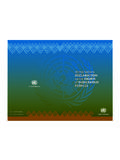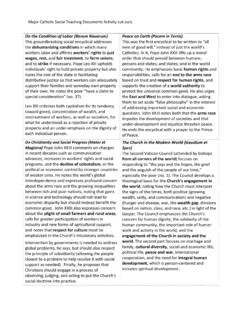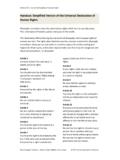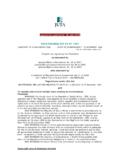Transcription of Justice in matters involving child victims and …
1 Handbook for Professionals and Policymakers on Justice in matters involving child victims and witnesses of crimeVienna International Centre, PO Box 500, 1400 Vienna, Austria Tel: +(43-1) 26060-0, Fax: +(43-1) 26060-5866, Justice HANDBOOK SERIES*0858376* united nations publicationPrinted in AustriaSales No. 32 ISBN December 2010 1,350 Handbook for Professionals andPolicymakers on Justice matters involving child victims and witnesses of CrimeCRIMINAL Justice HANDBOOK SERIESUNITED nations office ON DRUGS AND CRIMEV iennaUnited nationsnew York, 2009 NoteSymbols of united nations documents are composed of capital letters combined with figures. Mention of such a symbol indicates a reference to a united nations on uniform resource locators and Internet sites contained in the present publication are provided for the convenience of the reader and are correct at the time of issue.
2 The united nations takes no responsibility for the continued accuracy of that information or for the content of any external nations PUBLICATIONS ales No. 978-92-1-130289-9iiiContentsIntroduction .. 1 I. The best interests of the child .. 5 A. Domestic acknowledgement of the principle of the best interests of the child .. 6 B. Domestic implementation of the principle of the best interests of the child .. 8 II. The right to be treated with dignity and 13 A. Domestic acknowledgement of the right to be treated with dignity and compassion .. 14 B. Domestic implementation of the right to be treated with dignity and compassion .. 15 III. The right to be protected from discrimination .. 21 A. General protection of children from all forms of discrimination.
3 22 B. Positive distinction .. 23 C. Irrelevance of the child s age as a barrier to participation in the Justice process .. 25 IV. The right to be informed .. 31 A. The right to be informed of available assistance and of the role of the child victim and witness in the Justice process .. 33 B. The right to be informed about the status of the case .. 34 V. The right to be heard and to express views and concerns .. 41 A. Domestic acknowledgement of the right of child victims to express views and concerns in criminal proceedings .. 43 B. Issues on which child victims and witnesses may express their views and concerns .. 45 VI. The right to effective assistance .. 49 A. Assistance for the harmonious development of the child .
4 51 B. Assistance during the participation of child victims and witnesses in the Justice process .. 53 VII. The right to privacy .. 59 A. Restricted disclosure .. 60 B. Restricted attendance .. 62iv VIII. The right to be protected from hardship during the Justice process .. 65 A. Assistance of a support person during the Justice process .. 68 B. Providing certainty about the Justice process .. 70 C. Guaranteeing the expeditiousness of the proceedings .. 73 D. Developing child -friendly procedures .. 75 E. Limiting the child s contacts with the Justice process .. 79 F. Exempting the child from being confronted by the accused .. 81 G. Ensuring child -sensitive questioning and preventing intimidation .. 83 IX. The right to safety.
5 89 A. Reporting and investigating offences against children .. 90 B. Protective measures for children involved in the Justice process .. 91 X. The right to reparation .. 95 XI. The right to special preventive measures .. 101 A. Judicial prevention of offences against children at risk .. 102 B. Promoting awareness-raising, information and education for the prevention of offences against children at risk .. 103 XII. Implementation of the Guidelines .. 107 A. The training of professionals working with child victims and witnesses of crime .. 108 B. Cooperation in the enforcement of protective measures for child victims and witnesses .. 111 Annex Sources relating to child victims and witnesses of crime .. 119vAcknowledgementsThe present Handbook for Professionals and Policymakers on the Guidelines on Justice in matters involving child victims and witnesses of crime was prepared for the united nations office on Drugs and crime (UNODC) by Cyril Laucci, independent Handbook was revised by a group of international experts representing all the main legal systems and regions, which met in Vienna on 24 and 25 May 2007.
6 UNODC wishes to acknowledge the significant contributions made to the Handbook by the experts participating in that meeting: Alvaro A. Burgos Mata, Birgitta Engberg, Chris Graveson, Amod Kanth, Michel Lorcy, An Michels, Sharon Morris-Cummings, Jean-Fran ois No l, Julia Sloth-Nielsen and Renate Winter. Amanda Melville and Anne Grandjean of the united nations Children s Fund provided extensive input to the Handbook during the drafting and revision process, as did Nadja Pollaert, Director of the International Bureau for Children s Rights. Claudia Baroni and Anna Giudice Saget of UNODC guided the Handbook through to wishes to acknowledge the contribution of the Governments of Canada and Sweden toward the development of this In criminal Justice systems, victims of crime are often forgotten.
7 A fair, effective and humane criminal Justice system is one that respects the fundamental rights of suspects and offenders, as well as those of victims , and that is based on the principle that victims should be adequately recognized and treated with respect for their dignity. Those categories of victim, including children, who are particu-larly vulnerable, either through their personal characteristics or through the cir-cumstances of the crime , should benefit from measures tailored to their united nations office on Drugs and crime (UNODC) is the custodian of a growing body of united nations standards and norms in crime prevention and criminal Justice . These cover most areas of criminal Justice reform and treatment of offenders and provide an evolving body of guidelines for Member States when reforming their criminal Justice systems.
8 In the area of treatment of children by the criminal Justice system, they encompass the united nations Standard Minimum Rules for the Administration of Juvenile Justice (the Beijing Rules),1 the united nations Guidelines for the Prevention of Juvenile Delinquency (the Riyadh Guidelines),2 the united nations Rules for the Protection of Juveniles Deprived of their Liberty,3 and the Guidelines for Action on Children in the criminal Justice the area of protection of victims , the Declaration of Basic Principles of Justice for victims of crime and Abuse of Power,5 Economic and Social Council resolution 1989/57 on the implementation of the Declaration of Basic Principles of Justice for victims of crime and Abuse of Power and the plan of action for the implementation of the Declaration of Basic Principles of Justice for victims of crime and Abuse of Power6 did not provide detailed and specific guidance on the treatment of children as victims or witnesses of crime .
9 The Convention on the Rights of the child ,7 which has achieved almost univer-sal adherence, contains general provisions relating to child victims of abuse and 2 HANDBOOK ON Justice IN matters involving child victims AND witnesses Of crime juvenile Relevant provisions for the protection of victims are also contained in various legally binding international instruments, such as the Rome Statute of the International criminal Court,9 the united nations Convention against Transnational Organized crime and the Protocols thereto,10 as well as the united nations Convention against its resolution 2005/20, the Economic and Social Council adopted the Guide-lines on Justice in matters involving child victims and witnesses of crime (hereinafter referred to as the Guidelines ).
10 The Guidelines filled an important gap in international standards in the area of the treatment of children as victims or witnesses of Guidelines, which represent good practice based on the consensus of contemporary knowledge and relevant regional and international norms, standards and principles, were adopted with a view to providing a practical framework to achieve the following objectives: To assist in the review of national laws, procedures and practices so that they ensure full respect for the rights of child victims and witnesses of crime and contribute to the implementation of the Convention on the Rights of the child by parties to that Convention. To assist Governments, international organizations, public agencies, non- governmental and community-based organizations and other interested parties in designing and implementing legislation, policies, programmes and practices that address key issues related to child victims and witnesses of crime .

















